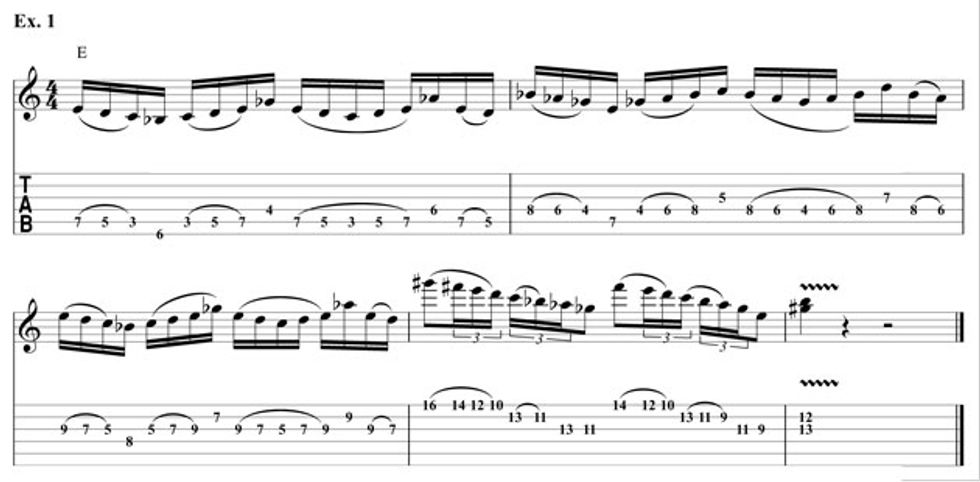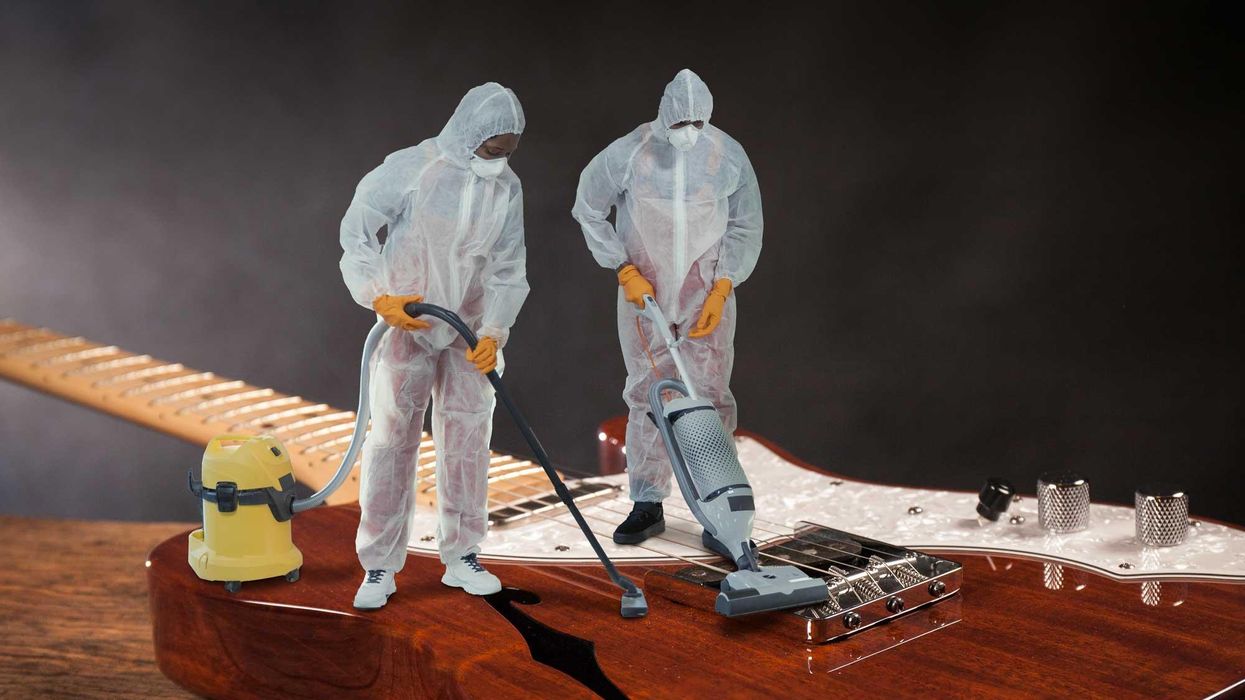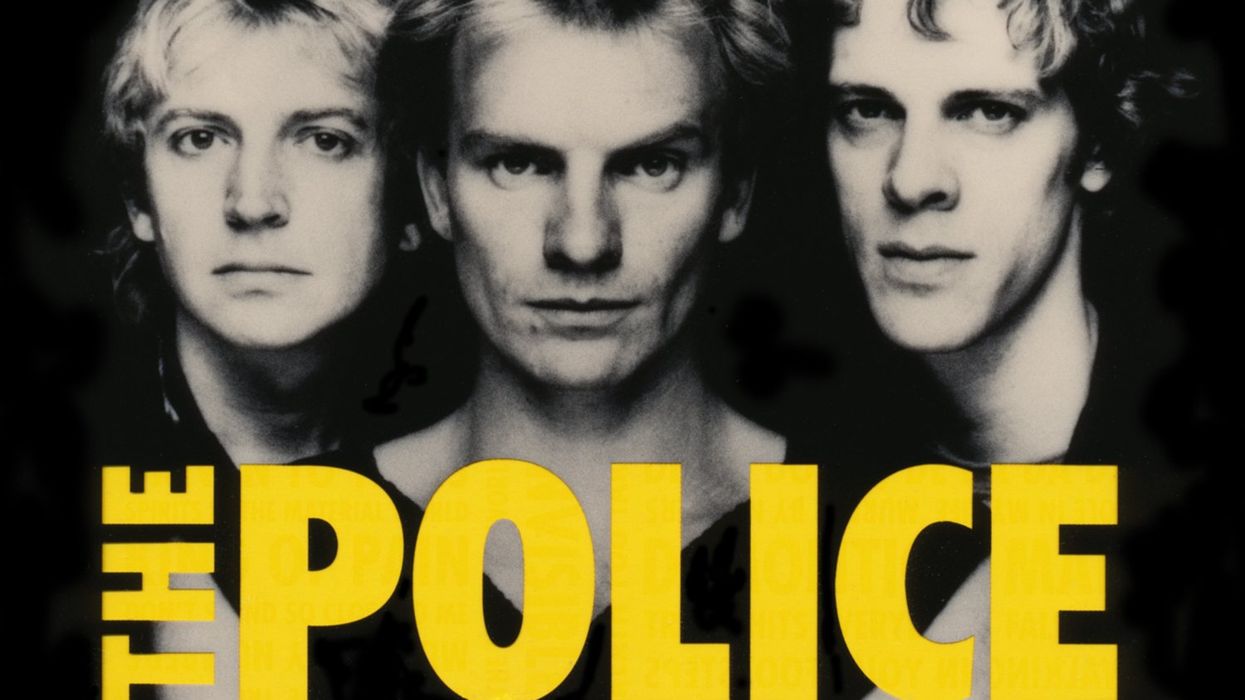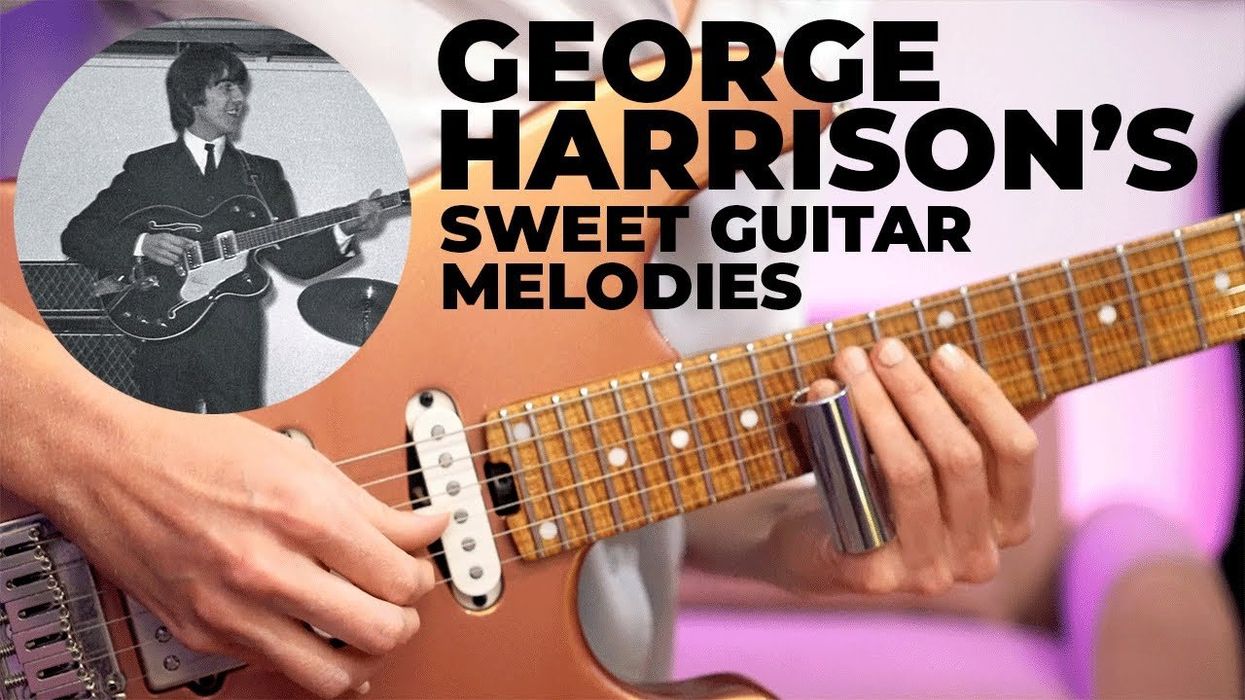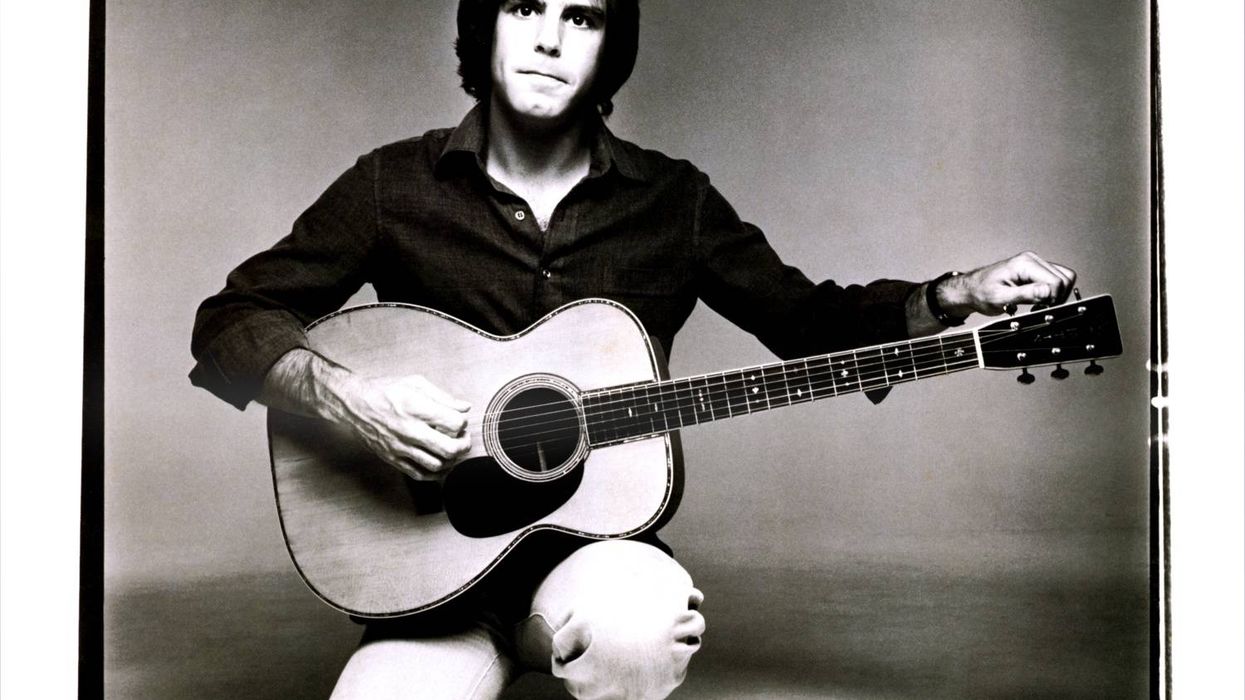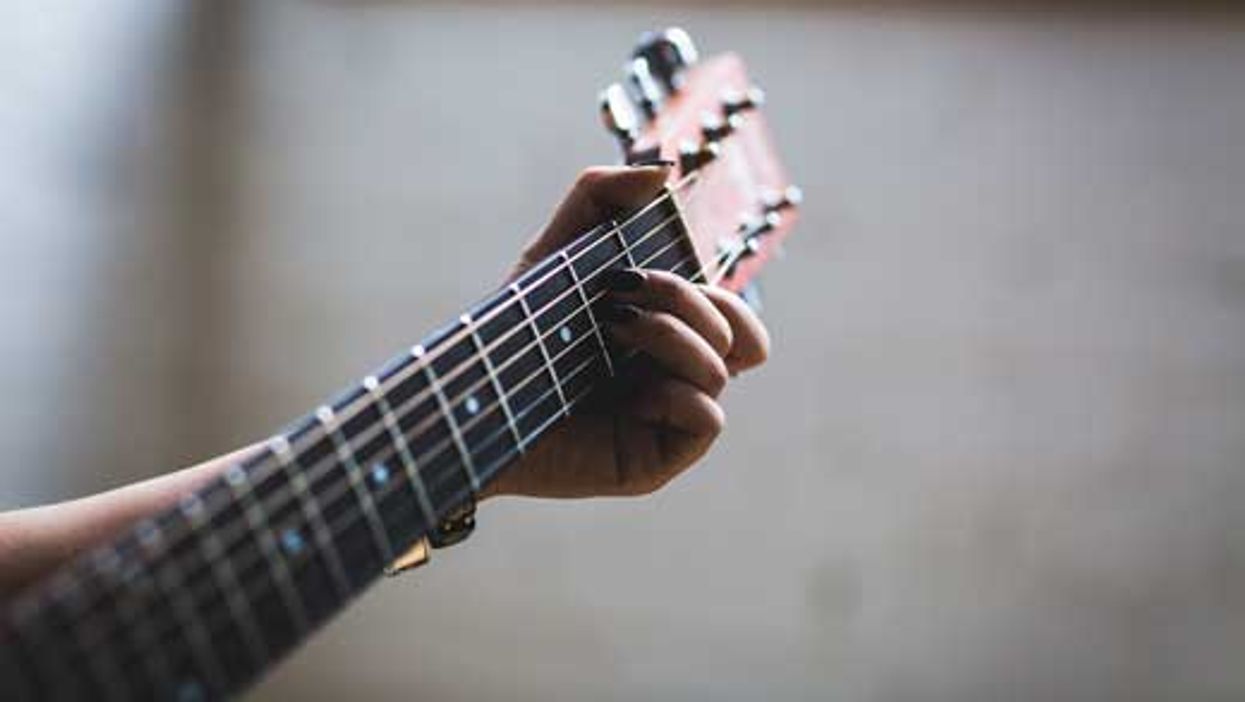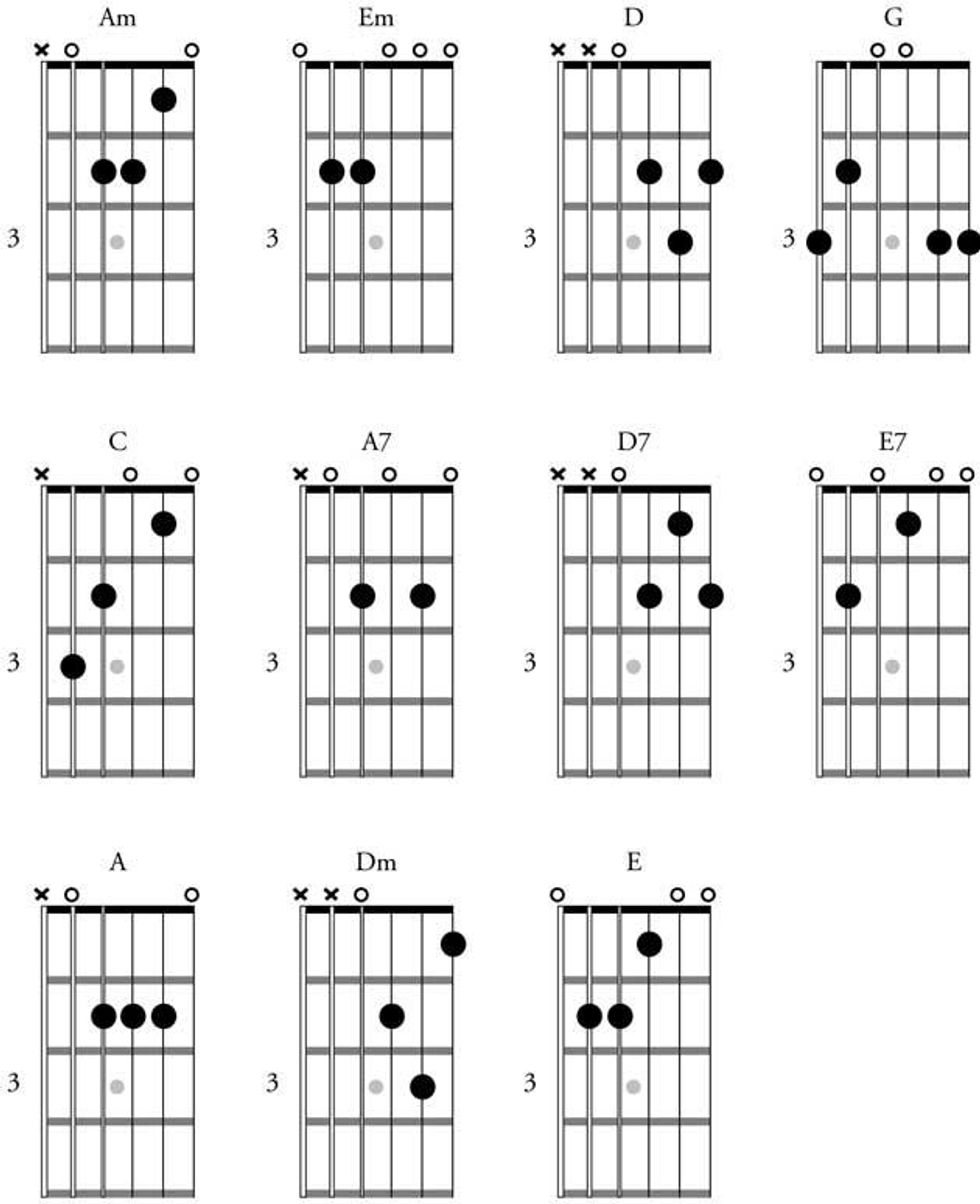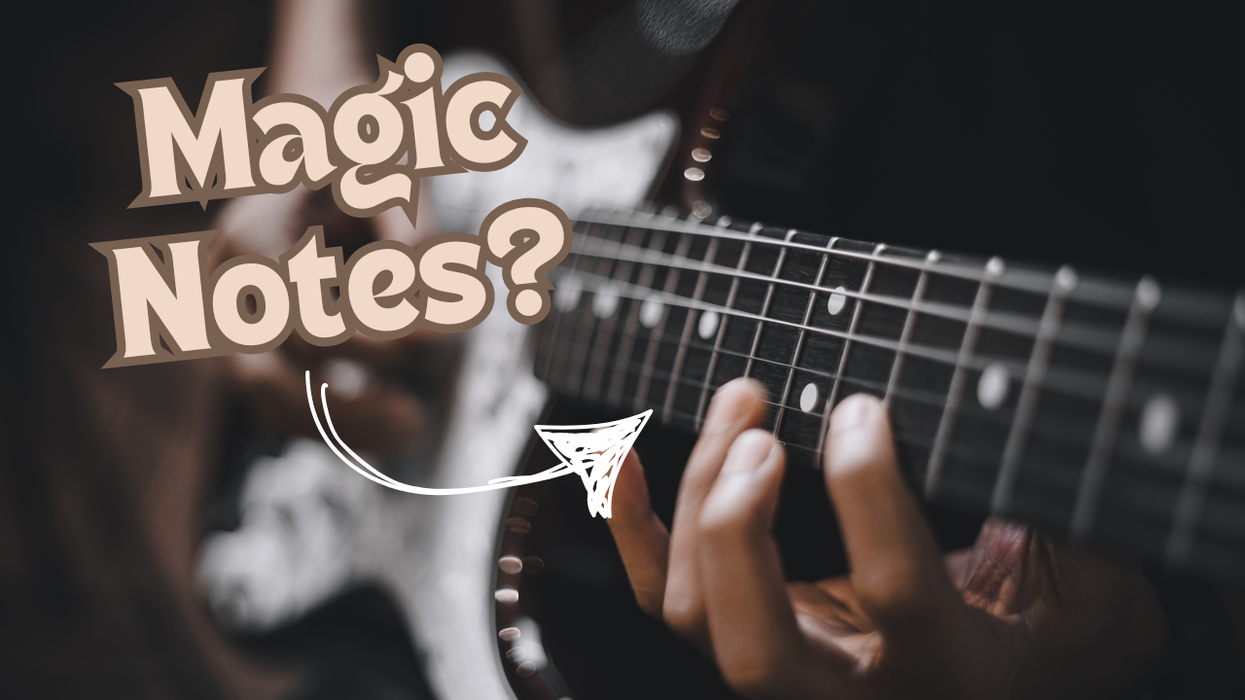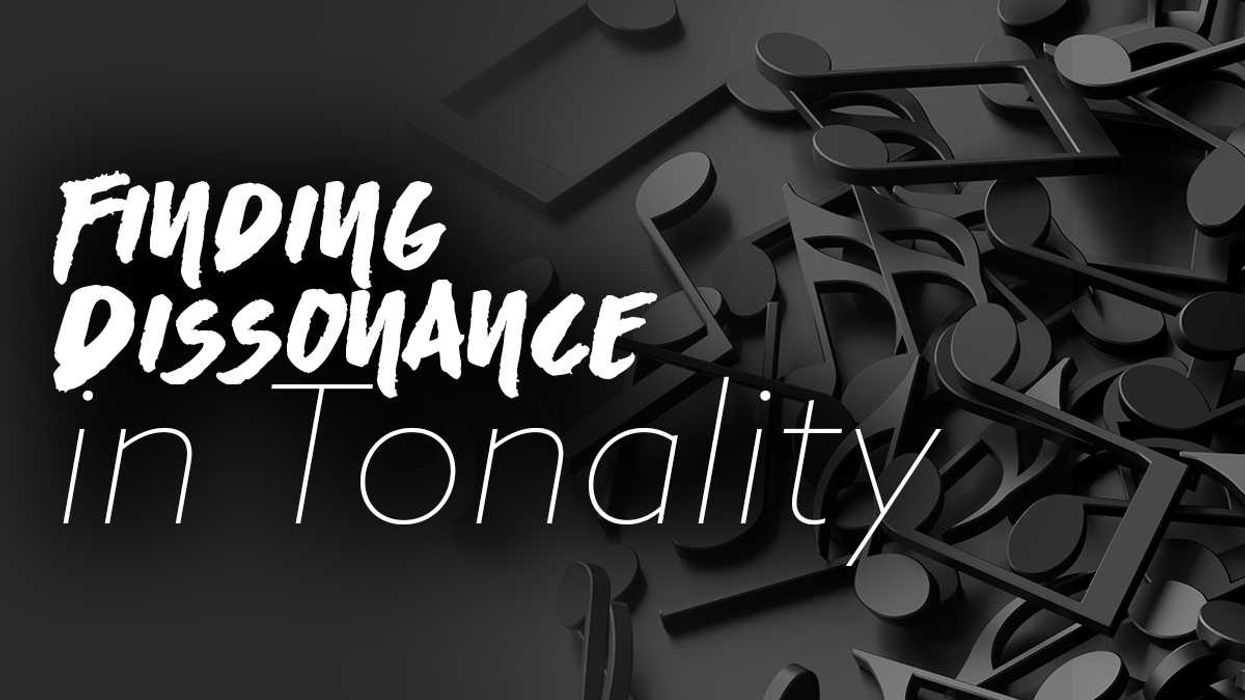Chops: Intermediate
Theory: Advanced
Lesson Overview:
• Learn how to use diminished, augmented, and whole-tone scales.
• Create angular lines that emphasize altered sounds.
• Break down complicated scales into easily understood ideas.
Click here to download a printable PDF of this lesson's notation.
Have you ever craved a little extra musical spice? Do you want your licks to have a sense of mystery, urgency, darkness, or zaniness that major scales and their corresponding modes can’t provide? If so, you may want to investigate symmetrical scales. The concept behind a symmetrical scale is pretty simple: The intervals within the scale follow a consistent and predictable pattern. For example, moving up in whole-steps until you reach the root creates a whole-tone scale. We’ll also cover diminished and augmented scales in this lesson, so let’s dig in!
Ex. 1 is based on a whole-tone scale. You may remember that we used this scale for a warm-up exercise a few months ago [“Future Rock: Hybrid Picking”]. As I mentioned, creating a whole-tone scale couldn’t be easier, just keep stacking up whole-steps until you get back to your root. You can hear this sound in the impressionistic work of Maurice Ravel and Claude Debussy. A whole-tone scale creates an unfinished, dreamy quality since it doesn’t really resolve anywhere (that’s because any note in the scale could be considered the root). Everyone from hardcore jazzers to shredders like Bumblefoot, Buckethead, and Shawn Lane have twisted and turned this scale far past what any of the classical composers ever envisioned.
Because of the whole-tone scale’s symmetrical construction, there are only two different versions and each one is a half-step apart. Whole-tone scales sound great over dominant 7#5 chords, but also create an interesting sound over minor 7 chords (just make sure to use the whole-tone scale that includes the b3 of the chord). In the example below, we have an E whole-tone scale (E-F#-G#-Bb-C-D) over an E pedal tone, and this creates an E altered sound.
We’re sticking with the E whole-tone scale in Ex. 2, but this one is inspired by Guns N’ Roses guitarist Bumblefoot, who is a wealth of creative whole-tone ideas. You can hear some interesting tension over the funky E7 rhythm. Because of the symmetrical nature of this scale, we can use both these examples over Gb7, Ab7, Bb7, C7, and D7.
We dig into diminished sounds in Ex. 3. Here, we have a half-whole diminished scale that, as the name suggests, is created by alternating half-steps and whole-steps. Again, because of the scale’s symmetrical nature, there are only three versions. When you look at the intervals the scale contains relative to the root—in this case, G—you get b9, #9, 3, #11, 5, 6, and b7. That combination of tones works great over 7#9, 7b9, 7b5, and even basic dominant 7 chords. Make sure you are hearing the scale and thinking about the function of each note over the chord. This will help free you up to improvise with the half-whole diminished scale.
While the previous example was a more obvious-sounding diminished run, Ex. 4 explores the scale in a more intervallic fashion and creates a less predictable, more contoured line. So, how do we create melodically interesting ideas using this scale? Well, I like to break down scales into more simple components. The G half-whole diminished scale can be broken down into four major triads—G, Bb, Db, and E. Notice how the triads are a minor third apart. This concept makes the material much easier to work with and the familiar sound of the triads is a nice bonus. Analyze this line and find the triads within it. It’s like a scavenger hunt, only nerdier!
It’s also good to know that Ex. 3 and Ex. 4 can be played over Bdim7, Ddim7, Fdim7, and Abdim7. When we do this, the scale flips around to the whole-half diminished scale, which is created by alternating whole-steps and half-steps. The general rule of thumb: When playing over a dominant, use the diminished scale that starts with a half-step, and when playing over a diminished chord, use the scale that starts with a whole-step.
In Ex. 5 we explore the mysterious augmented scale that’s used by such great improvisers as Oliver Nelson and Michael Brecker. Alternating minor thirds with half-steps creates this unusual and intriguing sound. An A augmented scale would be A-C-C#-E-F-G#. Another way to think of it is an augmented triad with a half-step approach to each chord tone. The most common chord to use this over would be a major7#5, but you can explore using it over dominant chords as well (just start the scale a half-step above the root).
In this example, we’re using an A augmented scale over an Ab7 that resolves to Dbmaj7. Again, I want to boil this down to some triads, so I was thinking of three major triads: A, C#, and F. This lick is literally just that! As you play it, be sure to dampen the strings with your tapping hand to avoid any extraneous noise.



